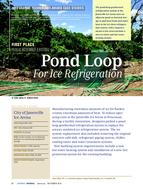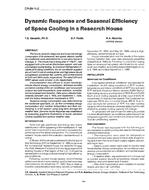Heat transfer enhancement facilitated by the use of in-phase sinusoidal wavy-plate channels in plate heat exchangers is characterized.Such corrugated surfaces, besides providing a high-density compact heat-exchange surface also augment the convective heat transfer coefficient.Their usage in heating, air-conditioning, and waste-heat recovery exchangers, among others, yield smaller systems, that can operate withsubstantially lower temperature differentials. In this study, single-phase, periodically developed, constant property laminar forced convection isconsidered, with the corrugated plates subjected to a uniform wall temperature. Besides the Reynolds number Re and Prandtl number Pr, thehydrodynamic and thermal behavior is strongly influenced by the channel geometry, and the corrugation aspect ratio (gamma = waviness pitch /2xamplitude) in particular. The flow field is characterized by two distinct regimes: at low Re or smaller corrugation aspect ratio, the flow tendsto follow the wavy channel geometry, undisturbed, and the increased convection can be ascribed to the larger effective flow length; at higher Re orwith higher (more severe) corrugation aspect ratio, lateral vortices are produced in the trough regions of the channel that promote greater coreacceleration and cross-sectional mixing, and thereby enhance convection. The trends in the variation of friction factor f and Nusselt number Nuwith Re and gamma show a well-defined deviation as the flow changes from the no-swirl to swirl flow regime. Based on the dimensionless scaling of thesebehaviors with Re, Pr, and gamma, predictive equations or correlations for f and Nu are devised that represent the available set of results rather well.
Citation: ASHRAE Conference Papers, Denver, CO
Product Details
- Published:
- 2013
- Number of Pages:
- 8
- File Size:
- 1 file , 1 MB
- Product Code(s):
- D-DE-13-C059


